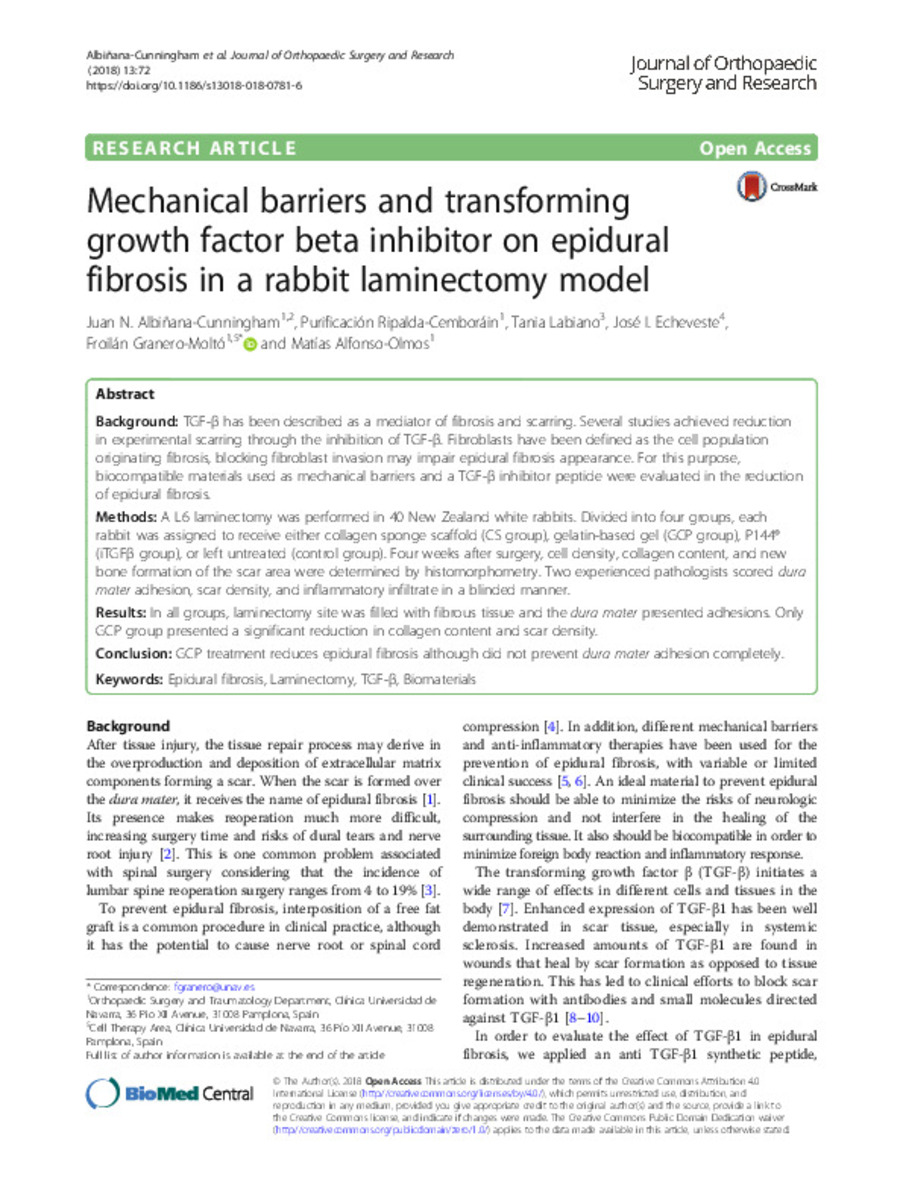Mechanical barriers and transforming growth factor beta inhibitor on epidural fibrosis in a rabbit laminectomy model
Keywords:
Epidural fibrosis
Laminectomy
TGF-β
Biomaterials
Publisher:
BioMed Central
Note:
This article is distributed under the terms of the Creative Commons Attribution 4.0
International License (http://creativecommons.org/licenses/by/4.0/), which permits unrestricted use, distribution, and
reproduction in any medium, provided you give appropriate credit to the original author(s) and the source, provide a link to
the Creative Commons license, and indicate if changes were made. The Creative Commons Public Domain Dedication waiver
(http://creativecommons.org/publicdomain/zero/1.0/) applies to the data made available in this article, unless otherwise stated
Citation:
Albiñana-Cunningham, J.N. (Juan Newton); Ripalda, P. (P.); Labiano, T. (Tania); et al. "Mechanical barriers and transforming growth factor beta inhibitor on epidural fibrosis in a rabbit laminectomy model". Journal of orthopaedic surgery and research. 32, 2018, 72
Statistics and impact
0 citas en

0 citas en

Items in Dadun are protected by copyright, with all rights reserved, unless otherwise indicated.








